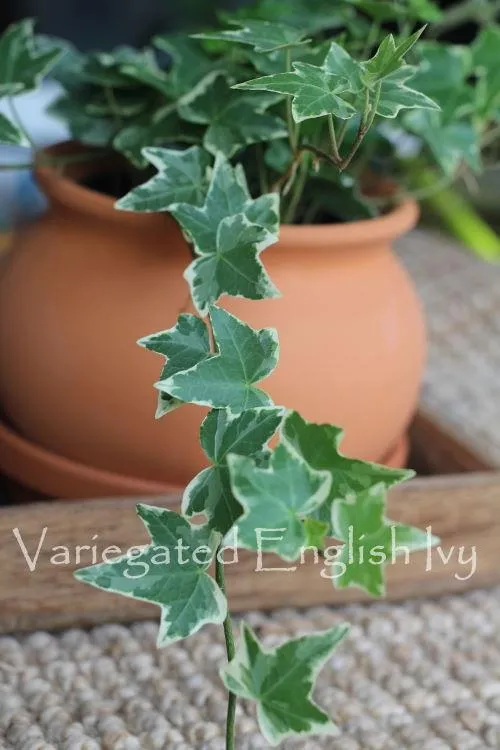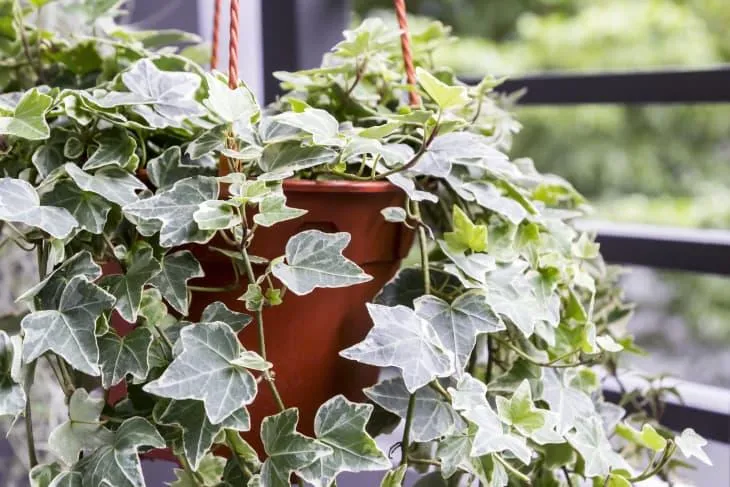A Complete Guide to Caring for Hedera Ivy
Hedera, commonly known as English ivy, is a popular climbing vine grown both indoors and outdoors. While low maintenance once established, hedera does require some TLC to thrive. In this article, I’ll cover all the basics of hedera ivy care from my years of experience as a houseplant enthusiast.
Choosing a Location
The first key to success with hedera is finding the right spot. Hedera prefers bright, indirect light but can tolerate some shade. From what I’ve seen, southeast or west-facing windows tend to work well. Keep it away from direct afternoon sun, though, or the leaves may burn. An east window is also a no-go as the plant won’t get enough light there.
Inside, choose a spot within a few feet of the window. You’ll want the ivy reasonably close to the light source. Outside, protect it from harsh midday sun if growing in a spot with full sun. Morning or afternoon filtered rays are best. But you do need some sun – pure shade will result in leggy, non-variegated growth.
Soil and Potting
For soil, you’ll basically want anything well-draining. A mix of peat moss or coir, perlite or vermiculite, and potting soil works great. The key is avoiding soggy wet roots. I’d also pot up one size from the nursery container to allow for growth. Terracotta or plastic nursery pots both function well. You can also train ivy directly onto trellises or structures outdoors.
Speaking of trellises, I remember this one time I tied my ivy to an ugly chain link fence out back. Over the years, that sucker totally covered it up! You’d never know there was an ugly fence underneath. The ivy totally salvaged that eyesore of a fence. So trellises are a great option to give ivy some support.
Watering Advice
When it comes to watering hedera ivy, the old saying “less is more” certainly applies. Allow the top inch or so of soil to dry out between waterings. Soggy soil will cause dropped leaves and may even rot the stems. I’ve found myself over-watering plants way more times than under-watering them!
During the growing season when it’s actively putting on new growth, water when the top soil becomes dry. In winter when it’s dormant, cut back watering significantly. Like, maybe once a month type situation. Only water enough to keep the soil slightly moist.
Also, beware of collecting water in saucers or trays under pots. I always make sure to dump out any excess after 10 minutes so the roots don’t sit in soggy soil. Trust me, overwatering is way easier than you think! Water issues are one of the main reasons new plant parents kill their ivies.

Fertilizing
You’ll want to give your hedera some plant food to encourage lush growth. During spring and summer, use a diluted liquid fertilizer monthly. I like to mix up a gentle formula of 1⁄4 or 1⁄2 the strength recommended on the bottle. Too much nitrogen can cause soft, floppy growth.
Speaking of fertilizer, a total LOL moment was the time my cat decided my fertilizer bottle looked like a tasty drink. I came back to find James laying by the back door, puking up blue fertilizer bits everywhere! Let’s just say I now keep all chemicals well out of reach. Whoops!
Anyway, during fall and winter you can skip feeds. The plant will be dormant. Come early spring when new buds appear, start fertilizing once more on a regular monthly schedule. Follow dilution rates and don’t overdo it. With the right balance of food, your ivy will thrive like crazy!
Pruning
Pruning is mainly for shaping and controlling growth on hedera ivy. In spring when new buds form, give the plant a light trim to remove any dead or diseased sections. This promotes air circulation and fresh new growth. You can also prune selectively to encourage a fuller shape if desired.
Indoors, regular pruning trains the ivy up a support or trellis. Simply remove runners that stray from the desired path. Outdoors, hard pruning in late winter gives the plant a structural form for the coming year. Be bold – you won’t hurt the ivy! It’ll just send out denser new growth to fill in.
Pro tip – have you ever tried pruning ivy with nail scissors? Bad idea, let me tell ya. Those little cutters are not meant for plant trimming and I ended up battling with tough vines for like an hour! Invest in some bypass pruners – they make the job so much neater and faster. Live and learn!
Pests and Problems
Thankfully, hedera ivy is generally very hardy and pest-free. But watch out for occasional infestations. Mealybugs can be a problem, looking like cottony blobs on stems and leaves. Wipe individually with alcohol on a cotton ball. Or try neem oil as a natural spray.
Scale insects also plague some ivies. These tiny pests appear as hard, brown bumps that secrete sticky honeydew. Rub off with alcohol or horticultural oil. Keep an eye out for spider mites too under dry, warm conditions. Their webbing is a tell-tale sign. Spraying the whole plant down forces them off.

Brown or yellow leaf spots signal potential fungal or bacterial issues. Cut off affected parts and improve air circulation. As a preventative, apply a fungicide cautiously as directed. And don’t forget – overwatered soil is a haven for root rot! Get on a careful routine to avoid drainage problems.
Repotting
Only repot hedera ivy every 2-3 years or when roots completely fill the container. Early spring before new growth starts is best. Carefully remove the plant from its pot and inspect the rootball. Gently loosen circling or matted roots. Repot up one size in a fresh well-draining mix.
Pack soil firmly around the roots without compacting. Give a thorough watering after potting to settle everything in. Then ease back to your regular schedule. I’ve found hedera isn’t too fussy about repotting as long as you go slow and don’t disturb the roots too much. It bounces right back!
Dormancy and Winter Care
In colder zones where temperatures regularly dip below freezing, hedera needs partial winter dormancy to thrive long-term. Outside, protect from harsh winds and bring under eaves or into an unheated garage below 45°F. Inside, find the coolest, brightest spot you have like a sunroom or garage.
Cut back watering significantly and allow the soil to fully dry between waterings. You can also trim it back by 1⁄3 to encourage bushier re-growth in spring. Come February or March once night temps are reliably above freezing, gradually increase to normal care. This mimics its natural cycle to prevent legginess.
During the long indoor winter months, don’t despair if growth seems halted. As long as new buds appear by April, your ivy is still healthy underneath! Be patient until it perks back up. Proper dormancy is key for continued success over many years. Hey, does anyone have other tips for happy, thriving ivy? Share below!
Common Issues Solved
So in summary, I hope this guide has addressed all the top questions homeowners have when caring for their hedera ivy plants. To quickly recap some common problems:
– Browning or yellow leaves – Overwatering, low light, cold drafts
– Plants not growing – Insufficient light, water, or fertilizer
– Leggy growth – Needs pruning/shaping, not enough light
– Pests like scales or mealybugs – Wipe/spray regularly with neem oil or insecticide
– Flowers or seed pods forming – Normal, nothing to worry about!

With the right conditions and care routine, your hedera ivy will reward you with lush greenery indoors or out for many years to come. Feel free to post any other queries below. I’m always happy to help troubleshoot growing issues! Wishing you the best of luck with your ivy.
Hedera Ivy Care Tips
| Sunlight | Partial shade to full sun. Leaves may scorch in full sun. |
|---|---|
| Water | Keep soil moist but not soggy. Water thoroughly then allow to dry out between waterings. |
| Soil | Well-draining, moist but not soggy. Amend clay or sandy soil with compost. |
| Fertilizer | In spring and summer, use diluted liquid fertilizer every 2 weeks. |
| Pruning | Pinch back new growth in spring to encourage bushiness. Remove dead or diseased growth anytime. |
| Problems | Aphids, powdery mildew or leaf spot may occur. Treat with appropriate pesticide as needed. |
FAQ
-
What lighting conditions does Hedera ivy need?
Hedera ivy basically prefers bright, indirect light. Putting it in a spot that gets morning sun is normally good. However, too much direct sun can cause the leaves to burn, so don’t put it in a south-facing window. At the same time, it does need at least some light, so an east or west window works well.
-
How often should I water Hedera ivy?
You’ll need to water Hedera ivy when the top inch or two of soil is dry. Basically check the soil by sticking your finger in it. During the summer months when it’s hot, you may need to water every 5-7 days. In the winter when it’s cool, every couple of weeks is often enough. Nevertheless, don’t let it sit in soaked soil either – aim to keep the soil lightly moist.
-
Does Hedera ivy need fertilizer?
Hedera ivy can get along fine without fertilizer. However, it will grow and thrive better if you feed it during the spring and summer months. You can use a general houseplant fertilizer at half the strength recommended on the package each time you water. Some experts say using fertilizer every other watering is sufficient. On the other hand, if growth seems slow you may want to fertilize more regularly. Just be careful not to overdo it and burn the roots.
-
How do I prune Hedera ivy?
Hedera ivy doesn’t necessarily need regular pruning, but you can trim it to keep it looking tidy or control its size and shape. Basically, just use clean scissors or pruning shears and cut back any trailing or straggly stems. Cut back to a set of leaves or side stem. Perhaps next spring you’ll see new growth sprouting from there. Make sure to sanitize your pruning tools between plants to avoid spreading disease.
-
Does Hedera ivy need repotting?
Most Hedera ivy plants can stay in their original container for a long time before needing repotting. However, if it’s in a tiny pot and the roots are circling, or if growth seems very slow, it’s a sign the plant may need a larger pot. You’ll probably be fine leaving it for a couple years. Check the roots – if they’re all crowded and pot-bound, it’s repotting time. Use a pot with drainage holes that’s only an inch or two larger in diameter than the current one.
-
What are some problems with Hedera ivy?
The main problems to watch for with Hedera ivy are yellowing leaves, brown leaf tips, and bugs. Yellow leaves can mean too much sun, dry soil, or not enough fertilizer. Brown tips are usually from dry air. Check carefully for pests like spider mites or scale insects and treat right away if spotted. Having good growing conditions and pruning off affected parts can help prevent issues. But is care enough to keep your ivy perfectly healthy??
-
Is Hedera ivy poisonous?
Yes, Hedera ivy can be poisonous if eaten, especially for dogs and cats that may chew on leaves or stems. All parts of the plant contain saponins, which can cause nausea or vomiting if ingested. However, it’s not considered highly toxic unless large amounts are eaten. Most pets avoid the bitter taste. So if you have animals, you’ll want to keep Hedera ivy up high or behind a barrier they can’t get through, just to be safe. Perhaps give Fido or Fluffy a distraction if they seem interested?

